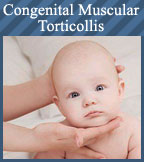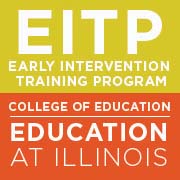Course Objectives:
Please scroll down for outcomes per discipline and other information, such as Target Audience, Course Content and Level
Congenital Muscular Torticollis and Acquired Plagiocephaly Primer in Early Intervention and Pre-School
Course intent: To provide occupational & physical therapists with the clinical background to understand the clinically relevant issues regarding obstetrical torticollis and plagiocephaly so as to implement appropriate therapeutic intervention in the fine motor, motor, and adaptive domains, as well as management and prevention of compensatory substitution postures.
Relevance to occupational & physical therapy: Physical & occupational therapists in the early intervention setting are on the front line of treating children with torticollis and plagiocephaly, whether in the neonatal intensive care unit, or the baby nursery at hospitals, but especially when visiting the home in the early intervention setting.
Target Audience: Occupational & Physical Therapists; certified occupational therapy assistants and physical therapy assistants
Outcomes:
Provider will be able to: identify anatomy, kinesiology and pathokinesiology of the sternocleidomastoid muscle
Provider will be able to: Identify etiology and epidemiology of torticollis and plagiocephaly
Provider will be able to: Identify risk factors torticollis and plagiocephaly and how to educate parents so as to minimize incidence of pathology
Provider will be able to: Identify clinically SCM contracture, fibrosis, pseudotumor during examination with SCM classification pathology
Provider will be able to: Identify compensatory craniofacial, upper trunk and spinal torsions and rotations if untreated
Provider will be able to: Provider will be able to: Identify all components of a comprehensive therapeutic regimen including passive stretching and active range of motion in ways that facilitates stretching of the contractured SCM
Provider will be able to: Identify all other secondary and relevant treatment modalities to facilitate resolution of torticollis, which include anti-gravity positioning, botox injections, and cervical collar usage
Provider will be able to: Identify of age related gains in equilibrium and righting reactions to facilitate stretching of the weak SCM, and stretching of the tight SCM
Provider will be able to: Identify all positional and orthotic interventions which will stave off the worsening of plagiocephaly, while dynamically remolding the head
Provider will be able to: Identity which treatment activities should not be part of the parental home exercise program carryover because of potential and unintended harm to the child’s neck and spine
Classification Codes: Category 1: Domain of OT
Areas of occupation: Play [play exploration] Social Participation [Family]
Client Factors: body functions [neuromusculoskeletal and movement related functions]. Activity demands [required actions and performance skills], performance skills [motor and praxis]
Category 2: Occupational Therapy process: Evaluation & Intervention
Evaluation: occupational profile, analysis of occupational performance
Interventions: Intervention plan, [establish, restore], Intervention, implementation [therapeutic use of occupations/ activities, consultation process, education process]
Target Audience: Advanced
Prerequisite: pediatric therapist provider - whether therapist or assistant – with orthopedic clinical background, or professional-grade graduate of accredited program in occupational or physical therapy.
COURSE AGENDA:
Introduction
Musculus Sternocleidomastoideus
Clinical Presentation & Examination
Etiology
Classifications
Diagnosis
Sequelae
Plagiocephaly
CMT & Radioimaging
Gross Motor Skills: Critical to Development of other Developmental Domains Management
Early Intervention
Rehabilitation
Surgery
Post Course Examination






